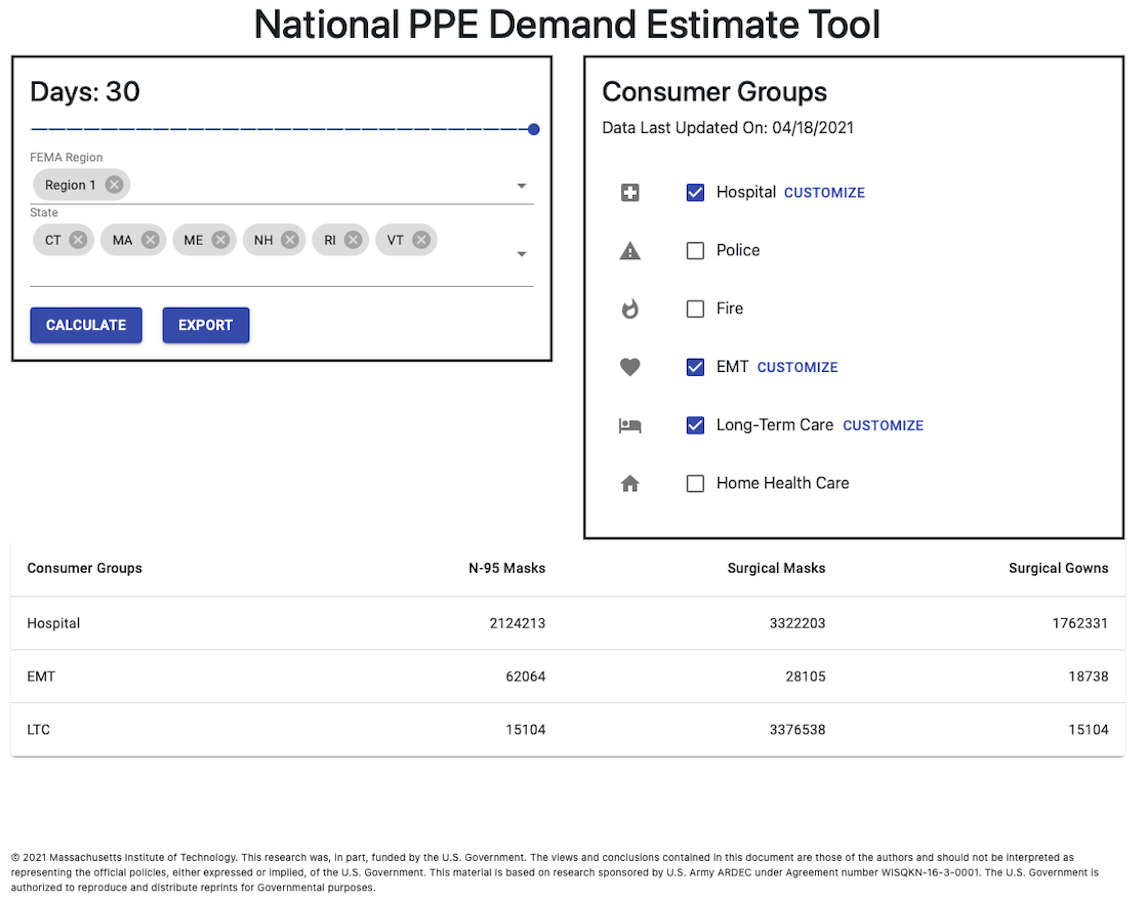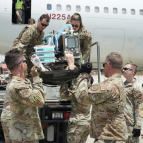National Demand PPE Study Web Application

In 2021, Lincoln Laboratory developed an estimation tool that can help users such as emergency response planners to estimate their region’s PPE usage during COVID-19 surge and steady-state scenarios. The project was sponsored by Advanced Functional Fabrics of America (AFFOA) with Coronavirus Aid, Relief, and Economic Security Act funding and the tool includes estimation capabilities for hospitals, emergency responders, long-term care and home health care facilities, firefighters, and police. By providing insight into the amount of equipment required, the tool is expected to help planners and others prepare for future PPE needs, including manufacturing.
The application estimates use of three types of PPE — N95 masks, surgical masks, and gowns — for up to 30 days. Users must input location information (state or Federal Emergency Management Agency [FEMA] region) and consumer group type at a minimum. For hospitals, long-term care facilities, and emergency responders, users can also input specific COVID-19 occupancy and growth rates to further customize their unique situation. The result is an estimation table that lists consumer groups along with the estimated number of PPE needed over the selected time period.

The Laboratory team built the tool using a variety of data, such as PPE use guidance from the Centers for Disease Control and Prevention, subject matter expert interviews, and published data on nation-wide COVID-19 hospitalizations and long-term care resident data. This data was integrated into an algorithm that uses the collected data plus the user’s input information to provide the estimates output by the tool.
The project took seven months to complete and was transitioned to the AFFOA in July, 2021. Since then, AFFOA has internalized the tool to use for their own PPE supply-chain analysis. For more information, contact Cassie Smith (Lincoln Laboratory) or Michael Rein (AFFOA).



